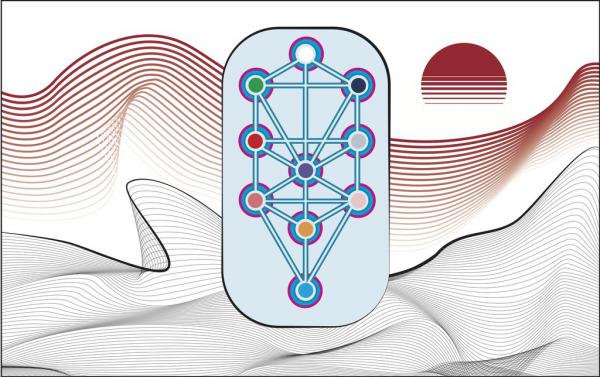BY LETTER
Kabbalah
 Image from Arik |
Old Earth tradition of Jewish theosophy and mysticism that flourished in the Middle Ages and Renaissance, and again with the esoteric revival of the Information Age.
The Kabbalah deals with questions of how the human person can relate to a God who is totally incomprehensible and other, and how that God relates to creation. God is explained in terms of ten archetypal divine emanations or Sefirot, each of which in turn contains a further ten sefirot, and so on, fractally. Also explained is cosmogony; the creation or emanation of angels and humanity, their destiny, the nature of the soul, and the eventual reunion and restoration (tikkun) of all the worlds. Kabbalah was adopted by Christians, Rosicrucians, and Hermeticists, culminating in the Industrial Age Golden Dawn system from which so much of later Hermeticism developed. Certain Kabbalistic elements continue to play an important part in Neohermeticism even today.
[Hebrew - from the verbal root kabal to receive, hand down]
Related Articles
- Asiyah
- Atzilut
- Binah (The Great Architect)
- Cyberhermeticism
- Keter (archailect)
- Malkuth (toposophy)
- Maya (The Lady of Illusions)
- Netzah (toposophy) - Text by M. Alan Kazlev
In the Keterist system of toposophy, corresponds to the fourth primary singularity or toposophic empire. The term was first applied in this context by the early Keterist Cyberhermetics. - Sephirah
- Yetzirah - Text by M. Alan Kazlev
The World of Formation - in traditional Kabbalah and Hermeticism the third of the fourth universes that emanated from the En Sof. The spiritual world immediately behind the physical universe.
Appears in Topics
Development Notes
Text by M. Alan Kazlev
Initially published on 29 November 2001.
Initially published on 29 November 2001.






